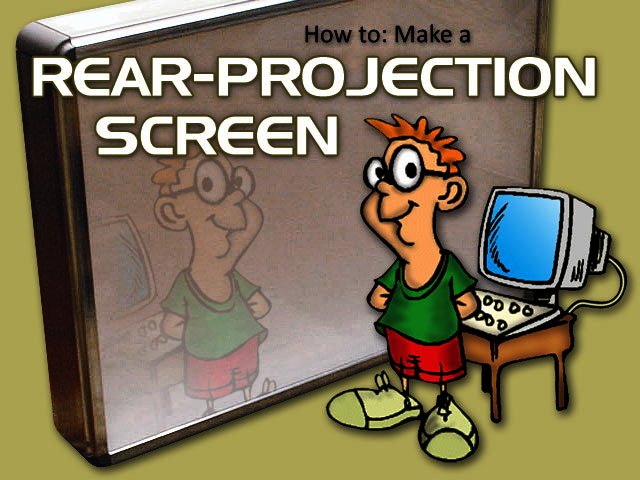There are a number of advantages to having a rear projection system. Firstly, you can make it almost as big as you want it, without paying the
exponential price increase that you would have to when buying an LCD screen. Secondly, as opposed to front projection, there are no issues of people or
objects getting in the way of your projection. There is also the advantage of being able to upgrade just the
projector and keeping your, already, very big screen.
This project will cost a bit more, in total, than the other projects I have taken on, but is so much cheaper than buying a new TV, assuming you already have a data projector. You also won’t be able to buy the parts for this project at any hardware shop, as they are usually used in the signage
industry, but they are easily available through Maizey Plastics –www.maizey.co.za.
What you need for a 50cm by 70cm screen (34"):
- A piece of clear acrylic sheet, like Plexiglas. I bought a piece about 50cm by 70cm (the aspect ratio of about 3:4)
- 3m length of 90mm aluminium lightbox profile
- 4 plastic corner sockets
- 1 sheet of A1 polyester drafting film, used for technical drawings (this you can get at most craft shops)
Construction of the screen is quite straightforward, but as the saying goes “measure twice, cut once”. You’ll need to carefully measure the length of each side of the screen and factor in the corners as they are curved inside, meaning that you need to cut each profile about 1cm longer than
calculated.
The easiest way to cut the
aluminium profiles is by using a
hacksaw and mitre box, unless you have a very steady hand, which I have not. As I found out, with some rather depressing skew cuts.
Once everything is cut, you need to measure and cut the piece of drafting film to the right size. Polyester drafting film is much, much cheaper than
professional rear-projection material making it the ideal material to use. It lets through just the right amount of light, while absorbing some, giving you an image of surprising quality, even in bright settings.
Now all you have to do is to put it all together. The corners make a very tight fit, so it’s unnecessary to use glue or rivets. The drafting film should be on the inside of the screen and can be taped in place at the edges of the acrylic sheet.
Once it has been put together, you need to decide how to mount it. You also need to calculate how far away to have the data projector, this might be the only real downside to using a rear-projection system, but at the price, who cares, plus it’s very impressive, especially if you make it much
bigger than I did. [AG] |

|






